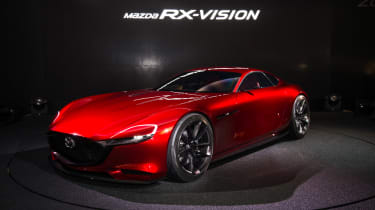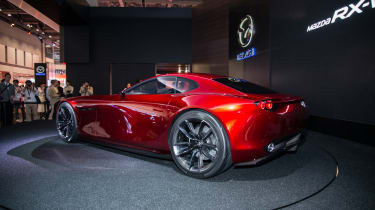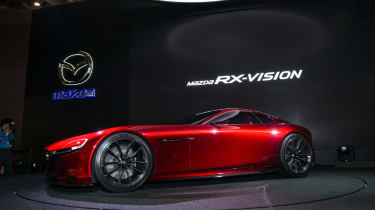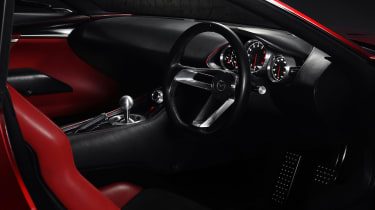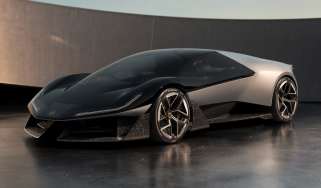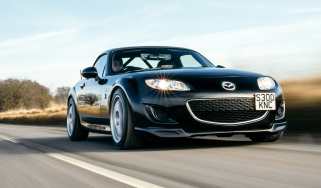Mazda RX-Vision - new pics of stunning rotary-engined concept
Concept of sports car unveiled at the Tokyo motor show. Production model due in 2017?
Mazda has unveiled a new concept at the Tokyo motor show that could finally replace the much-missed RX-7 sports car – rotary engine and all.
The RX-Vision concept was revealed in full today, under weighty expectations and the task of creating a ‘vision of the future that harbours the soul of the Mazda brand’.
While Mazda has been wildly successful at selling sports cars along a more basic formula – think the lightweight, four-cylinder roadster format of the MX-5 – the company built its name with cars powered by Wankel rotary power units.
Their experimentation began with the Cosmo Sport in May, 1967 and ended, in production terms at least, when the final RX-8 left the production line in 2012, as the characterful power unit finally succumbed to the demands of emissions regulations and fuel economy targets.
Speaking to evo, Mazda president and CEO Masamichi Kogai hinted that Mazda’s engineers were working hard on making the engine clean enough for modern use. That process will revolve around Mazda’s Skyactiv line of technologies – and the new unit is dubbed ‘Skyactiv-R’.
While he remained coy on specific details – Mazda hasn’t released capacity, power, torque, fuel economy or other important data points for the engine, or even whether Mazda has turned to turbocharging or hybridisation, the message was very clear that Mazda intends to release a rotary-engined sports car in the not-too distant future.
Design will also play a major part in the new car’s placement. It’s the latest iteration of Mazda’s ‘Kodo – Soul of motion’ design language, but the classic sports car proportions, low-slung stance and elimination of ‘character lines’ make it possibly the most beautiful interpretation yet.
It’s also a strong hint that Mazda intends to replace the legendary RX-7, rather than the entertaining but less-fondly remembered four-door RX-8 when a rotary model debuts.
At 4389mm long, 1925mm wide and 1160mm tall, its dramatic front-engined, rear-wheel drive proportions are 104mm shorter, 165mm wider and 70mm lower than the curvy third-generation RX-7.
To be clear, there's no guarantee Mazda will produce its rotary sports car in this form - nor when such a car might appear. But with 2017 marking 50 years of the rotary engine, it may not be long until one of the automotive world's most distinctive powerplants makes its return.

